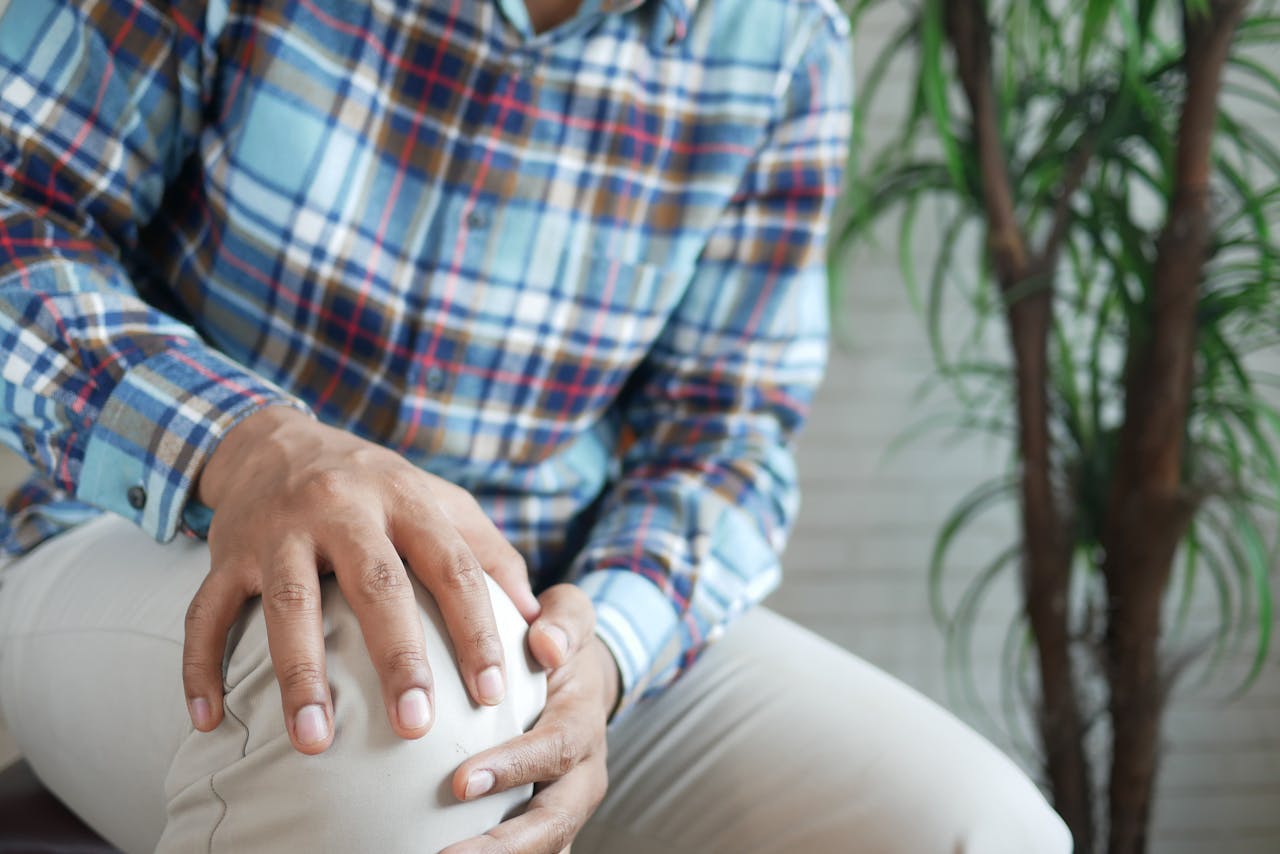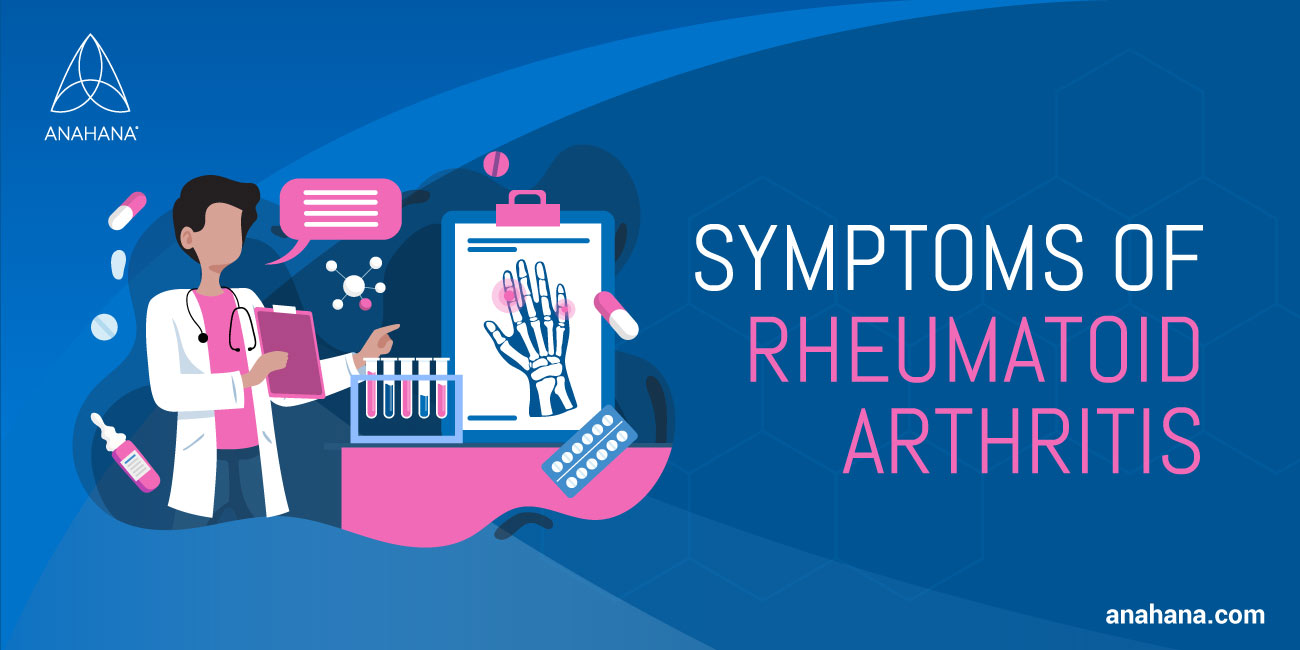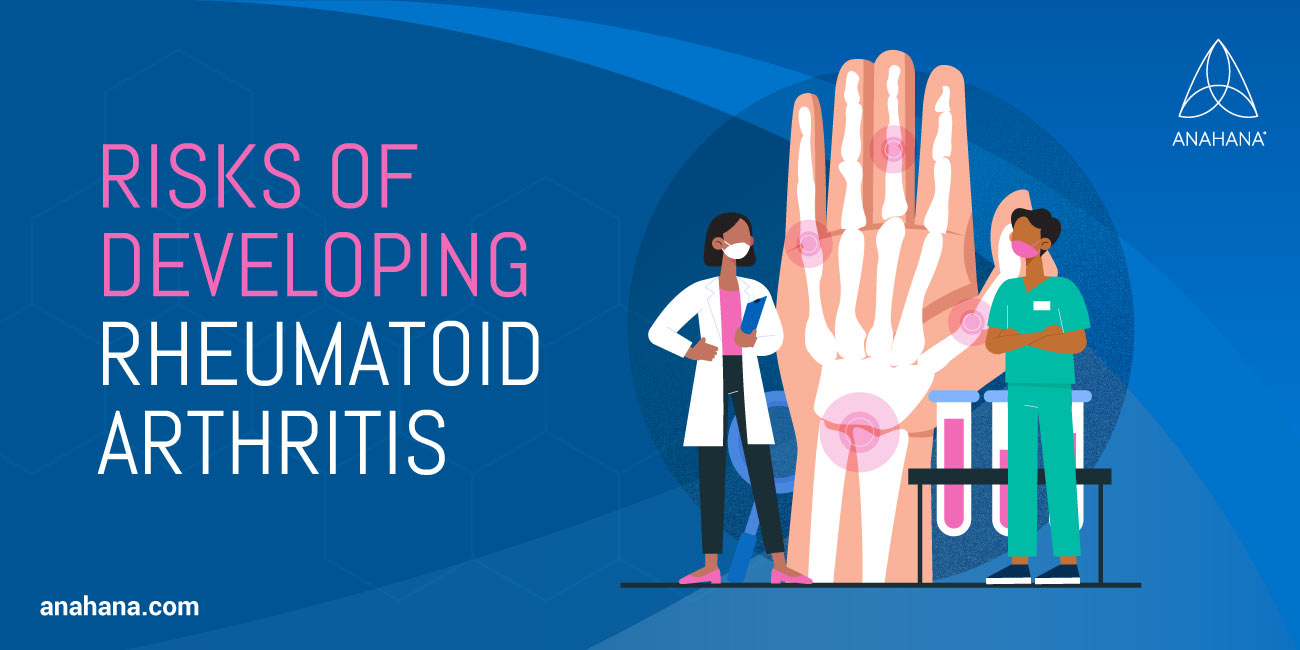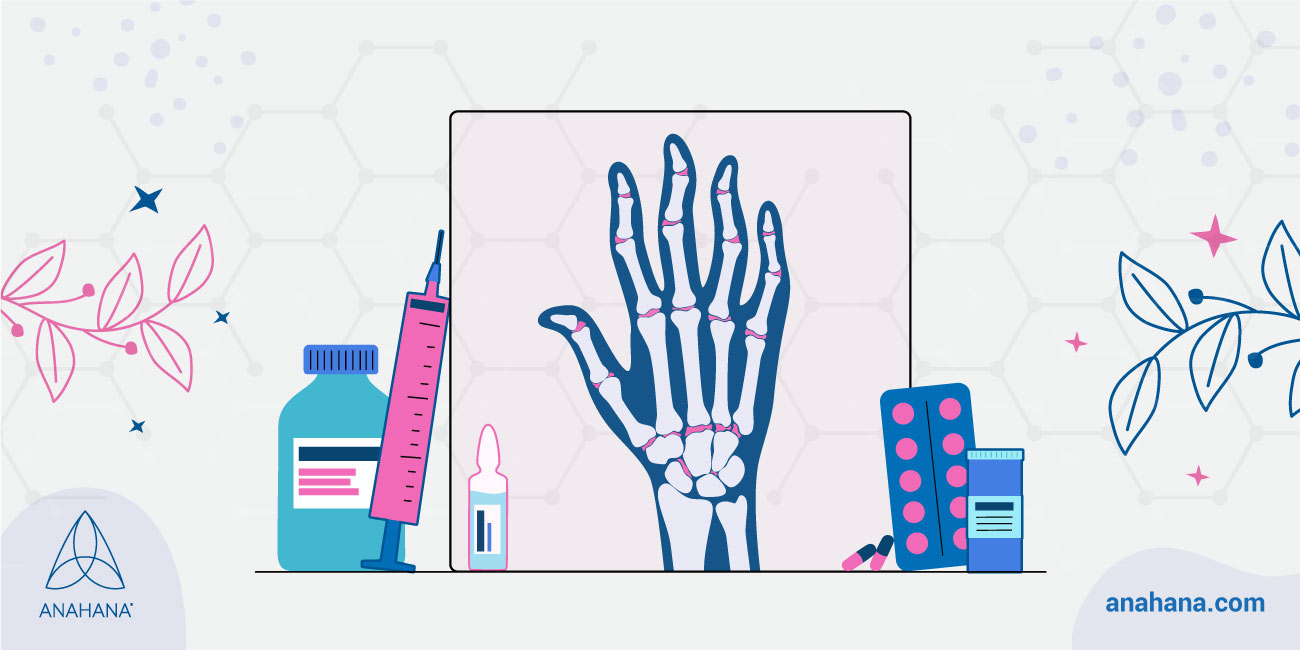
Table of Contents
Everything you want to know about rheumatoid arthritis, a widespread autoimmune inflammatory disorder.
Key Takeaways
- Definition: Rheumatoid arthritis (RA) is an autoimmune disease characterized by inflammatory arthritis, where the immune system attacks healthy joint tissue.
- Symptoms: RA symptoms include joint pain, stiffness, inflammation, fatigue, and weakness, often worsening in the morning.
- Risk Factors: Developing rheumatoid arthritis is influenced by genetic predisposition, age, gender, smoking, obesity, and physical or emotional trauma.
- Diagnosis: Includes physical exams, blood tests for rheumatoid factor, and imaging like X-rays or MRIs to detect early rheumatoid arthritis signs.
- Treatments: Involves medications, pain relievers, physical therapy, exercise, and lifestyle changes to manage symptoms and affected joints.
What Is Rheumatoid Arthritis?
Rheumatoid arthritis affects the synovial lining of joints which causes inflammation, stiffness, and pain in those joints. With rheumatoid arthritis, the immune system attacks healthy cells in the body, mainly in the joints of the hands, wrists, and knees. This can lead to damage to the joints and decreased joint function. Treatments for rheumatoid arthritis can include medications, physical and occupational therapy, exercise such as yoga, and at-home treatments. These treatment options can help to relieve pain, improve joint function and decrease the chance of joint deformity.
Symptoms of Rheumatoid Arthritis
 The main symptoms of rheumatoid arthritis are pain and aching, joint stiffness, and inflammation. The initial symptoms of rheumatoid arthritis are typically joint tenderness, and joint stiffness felt in the morning. Typically, small joints of the body, such as the joints of the hand, are affected first, followed by larger joints, such as the knees.
The main symptoms of rheumatoid arthritis are pain and aching, joint stiffness, and inflammation. The initial symptoms of rheumatoid arthritis are typically joint tenderness, and joint stiffness felt in the morning. Typically, small joints of the body, such as the joints of the hand, are affected first, followed by larger joints, such as the knees.
As rheumatoid arthritis progresses, painful joint inflammation and swelling of the joints' lining may cause bone erosion and joint deformities. Other symptoms associated with rheumatoid arthritis include weight loss, fatigue, and weakness. These symptoms can greatly affect the quality of life for people living with rheumatoid arthritis.
Often rheumatoid arthritis symptoms will increase in severity for a period of time followed by a decrease in symtoms. These are called flare ups which can be triggered by many different things including stress levels, certain foods or changes in weather.
Risk Factors for Developing Rheumatoid Arthritis
 Both genetic and environmental factors can increase the likelihood of developing rheumatoid arthritis. Specific genes have been linked to the development of rheumatoid arthritis. People born with those genes and exposed to environmental factors such as smoking are at the greatest risk for developing rheumatoid arthritis.
Both genetic and environmental factors can increase the likelihood of developing rheumatoid arthritis. Specific genes have been linked to the development of rheumatoid arthritis. People born with those genes and exposed to environmental factors such as smoking are at the greatest risk for developing rheumatoid arthritis.
The likelihood of developing rheumatoid arthritis increases with age. Rheumatoid arthritis is more common in women than in males. Cigarette smoking and obesity are also risk factors for rheumatoid arthritis.
How is Rheumatoid Arthritis Diagnosed?
Rheumatoid arthritis is most often diagnosed through a physical examination and relevant symptoms. Specialized doctors called rheumatologists have knowledge of arthritic conditions to make the correct diagnosis. Blood tests may also indicate rheumatoid arthritis by looking at either elevated erythrocyte sedimentation rate or c-reactive protein levels. Imaging tests such as X-rays or MRIs can be performed to check for the progression and severity of arthritis.
Treatment and Management of Rheumatoid Arthritis
The main goals of treatment for rheumatoid arthritis are to reduce inflammation, decrease symptoms, reduce joint pain, improve function and reduce or prevent complications and damage to the joints. It is also important with the treatment of people with RA, that a holistic approach is used looking at physical, mental, and emotional factors. One common treatment for rheumatoid arthritis is physiotherapy and occupational therapy. A physiotherapist can help improve the joints' function, and an occupational therapist can help find compensation strategies to help with daily tasks and maintaining independence.
Some alternative treatments for rheumatoid arthritis include acupuncture, chiropractic care, massage, and osteopathy. These treatments can help reduce pain and improve joint function for people with rheumatoid arthritis.
It is essential to remain physically active with rheumatoid arthritis to maintain the function of the joints. Forms of exercise, including pilates and yoga, can treat rheumatoid arthritis. Pilates can help to help maintain joint flexibility and increase strength to protect joints. Yoga can increase flexibility and balance while also reducing stress and improving mood. Stress management can also be a strategy for treating rheumatoid arthritis. This can be done through yoga, meditation, and daily exercise.
Nutrition changes may also help to relieve symptoms of rheumatoid arthritis, as certain foods may aggravate symptoms of rheumatoid arthritis. Other at-home treatments, including hot/cold therapies, can help with painful and stiff joints.
A doctor may prescribe medications such as disease-modifying anti-rheumatic drugs (DMARDs) to help with chronic joint pain caused by rheumatoid arthritis, painkillers, anti-inflammatory medications, and steroids. In severe cases, a person with rheumatoid arthritis may receive finger-hand wrist surgery.
What are the Rheumatoid Arthritis Complications?
There are some complications that are associated with rheumatoid arthritis. Rheumatoid arthritis can also increase your risk of developing other conditions such as Osteoporosis, rheumatoid nodules, carpel tunnel syndrome, and increased risk of infections. Rheumatoid arthritis can also affect other areas of the body, including the eyes, heart, and lungs.
Rheumatoid arthritis increases the overall risk of developing cardiovascular disease. Having rheumatoid arthritis also increases the risk of developing inflammation and scarring in the lungs and lung disease. There is even a higher chance of developing other conditions, including high blood pressure, cholesterol and diabetes, when a person has rheumatoid arthritis and obesity.
Rheumatoid arthritis can make daily tasks difficult and decrease a person’s overall independence and quality of life. People with rheumatoid arthritis may also have difficulty with employment and participation in meaningful hobbies.
Frequently Asked Questions About Rheumatoid Arthritis

What's the difference between rheumatoid arthritis and osteoarthritis as an autoimmune disease?
-
Both rheumatoid arthritis and osteoarthritis are types of arthritis that can lead to joint damage. They also often have many of the same symptoms, including painful and swollen joints.
-
Rheumatoid is an autoimmune disease in which the immune system attacks healthy tissues, which causes inflammation, pain, and damage to the body's joints. Osteoarthritis is not an autoimmune disease but a breakdown of the cartilage in the joints, usually caused by natural wear and tear on the joints.
Can rheumatoid arthritis be cured?
-
There is no cure for rheumatoid arthritis as it is considered a chronic disease. With an early diagnosis, there are treatments that can help decrease the damage to the joints and relieve symptoms of rheumatoid arthritis. Early treatment of rheumatoid arthritis usually involves a disease-modifying anti-rheumatic drug (DMARD).
Is it possible to prevent rheumatoid arthritis?
-
Although it may not be possible to completely prevent rheumatoid arthritis, there are some preventative measures that can decrease the risk of developing rheumatoid arthritis. Some of these preventive measures include avoiding smoking, participating in daily exercise, eating a balanced diet that includes omega-3s, maintaining proper levels of vitamin D, and reducing alcohol consumption.
Resources
Rheumatoid arthritis - Symptoms and causes - Mayo Clinic
Rheumatoid arthritis - Treatment - NHS
9 best exercises for rheumatoid arthritis pain: Tips and what to avoid.
Rheumatoid Arthritis vs Osteoarthritis: What's the Difference?
Rheumatoid arthritis - Treatment - NHS.
Rheumatoid arthritis - Diagnosis and treatment - Mayo Clinic
Rheumatoid arthritis - Symptoms and causes - Mayo Clinic.
Rheumatoid Arthritis Treatment Options
Disclaimer
The contents of this article are provided for informational purposes only and are not intended to substitute for professional medical advice, diagnosis, or treatment. It is always recommended to consult with a qualified healthcare provider before making any health-related changes or if you have any questions or concerns about your health. Anahana is not liable for any errors, omissions, or consequences that may occur from using the information provided.

By: Anahana
The Anahana team of researchers, writers, topic experts, and computer scientists come together worldwide to create educational and practical wellbeing articles, courses, and technology. Experienced professionals in mental and physical health, meditation, yoga, pilates, and many other fields collaborate to make complex topics easy to understand.
